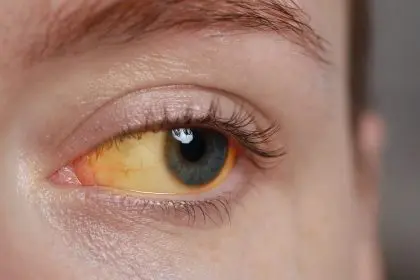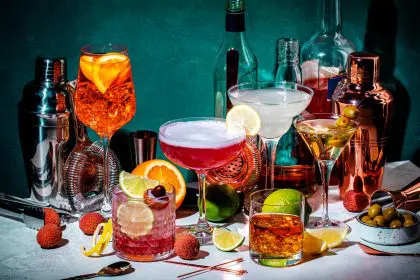That evening glass of wine or weekend cocktail might be the invisible culprit behind your stubborn weight loss plateau, working against your fitness goals in ways that extend far beyond the calories listed on nutrition apps. The relationship between alcohol and weight management involves complex metabolic processes that can derail even the most dedicated dieters who think they’re making smart choices.
The promise of unwinding with a drink after stressful days feels harmless enough, especially when choosing seemingly lighter options like wine or vodka sodas. However, alcohol’s impact on weight goes deeper than simple calorie counting, affecting how your body processes food, stores fat, and maintains the metabolic balance necessary for sustainable weight loss.
Understanding these hidden mechanisms can transform how you approach drinking while pursuing health goals, revealing why some people can enjoy alcohol without weight gain while others find that even moderate consumption stalls their progress completely. The key lies in recognizing how alcohol interacts with your individual metabolism and implementing strategies that work with your body rather than against it.
This knowledge empowers you to make informed decisions about when, what, and how much to drink, allowing you to maintain social connections and enjoyment without sacrificing the physical results you’ve worked hard to achieve.
How alcohol hijacks your metabolism
When alcohol enters your system, your body treats it as a toxin that must be processed immediately, effectively putting all other metabolic processes on hold until the alcohol is eliminated. This metabolic prioritization means that while your body burns alcohol for energy, it stops burning stored fat, carbohydrates, and other nutrients that would normally fuel weight loss.
The liver, your primary fat-burning organ, becomes completely occupied with alcohol detoxification, unable to perform its usual functions of breaking down fats and regulating blood sugar levels. This temporary shutdown can last for hours after your last drink, creating extended periods where fat burning comes to a complete halt.
Alcohol metabolism also generates acetate, a compound that your body preferentially burns for energy over fat stores. This means that even after the alcohol itself is processed, your metabolism continues running on alcohol byproducts rather than tapping into the fat reserves you’re trying to eliminate through diet and exercise.
The metabolic disruption extends beyond immediate fat burning, affecting hormone production, sleep quality, and appetite regulation in ways that can influence weight management for days after drinking. These cascading effects explain why weekend drinking can impact weight loss progress throughout the entire following week.
1. The hidden calorie bomb in mixers
While pure alcohol contains approximately 7 calories per gram, the real calorie damage often comes from mixers that can triple or quadruple the total caloric content of your drink. Popular cocktail ingredients like fruit juices, syrups, and pre-made mixes are essentially liquid sugar that your body processes rapidly, triggering insulin spikes that promote fat storage.
A single margarita can contain upwards of 300-500 calories, with most of those calories coming from sugary mixers rather than the tequila itself. Similarly, piña coladas, mudslides, and frozen cocktails often pack 400-800 calories per serving, equivalent to an entire meal’s worth of calories in liquid form that provides no nutritional value or satiety.
Even seemingly innocent mixers like tonic water, cranberry juice, and ginger ale contain significant amounts of sugar that add calories while triggering metabolic responses that interfere with fat burning. These liquid calories are particularly problematic because they don’t register the same satiety signals as solid food, making it easy to consume large amounts without feeling full.
The combination of alcohol and sugar creates a perfect storm for weight gain, as the alcohol prevents fat burning while the sugar provides easily accessible energy that gets stored as fat when it’s not immediately needed for bodily functions.
2. Appetite stimulation and poor food choices
Alcohol acts as an appetite stimulant, triggering hunger hormones that make you crave high-calorie, high-fat foods even when you’re not genuinely hungry. This effect becomes particularly pronounced with drinks that contain sugar, creating a double appetite stimulation that can lead to significant overeating.
The lowered inhibitions that accompany alcohol consumption make it much easier to abandon dietary discipline and indulge in foods you would normally avoid. Late-night pizza, bar snacks, and drive-through stops become appealing options when alcohol has impaired your judgment and increased your appetite.
Alcohol also affects blood sugar regulation, creating fluctuations that trigger cravings for quick-energy foods like refined carbohydrates and sugary snacks. These blood sugar swings can persist into the following day, making it difficult to maintain healthy eating patterns even after the alcohol has been metabolized.
The social aspect of drinking often involves food-centered activities like restaurant meals, parties, and gatherings where high-calorie options are abundant and social pressure makes it difficult to stick to healthy choices. This environmental factor compounds the physiological appetite effects of alcohol consumption.
3. Sleep disruption and hormonal chaos
While alcohol may help you fall asleep initially, it significantly disrupts sleep quality by interfering with REM sleep cycles and causing frequent awakenings throughout the night. This poor sleep quality has profound effects on weight-regulating hormones that control hunger, satiety, and metabolism.
Sleep deprivation caused by alcohol consumption increases production of ghrelin, the hormone that signals hunger, while decreasing leptin, the hormone that signals fullness. This hormonal imbalance can persist for days after drinking, making you feel hungrier and less satisfied by normal portions of food.
Disrupted sleep also affects cortisol levels, increasing production of this stress hormone that promotes fat storage, particularly around the midsection. Elevated cortisol also increases cravings for high-calorie comfort foods and can slow overall metabolic rate.
The fatigue resulting from poor sleep makes it much more difficult to maintain exercise routines and active lifestyles that support weight loss. When you’re exhausted from alcohol-disrupted sleep, gym sessions become less effective and daily activity levels naturally decrease.
4. Dehydration and water retention
Alcohol acts as a diuretic, causing increased urination that leads to dehydration despite the liquid consumption. This dehydration triggers your body to retain water as a protective mechanism, leading to bloating and temporary weight gain that can mask fat loss progress.
Dehydration also slows metabolic processes, making your body less efficient at burning calories and processing nutrients. When your body is dehydrated, cellular functions operate at reduced capacity, affecting everything from energy production to waste elimination.
The electrolyte imbalances caused by alcohol-induced dehydration can affect muscle function and recovery, making workouts less effective and potentially increasing injury risk. This reduced exercise capacity can significantly impact weight loss progress over time.
Many people mistake dehydration-related hunger signals for actual hunger, leading to increased food consumption when what the body actually needs is water. This confusion can add hundreds of unnecessary calories to daily intake.
5. The accumulation effect of regular drinking
Even moderate daily drinking can create cumulative effects that significantly impact weight loss over time. A single glass of wine per day might seem harmless, but it represents over 25,000 calories per year – equivalent to more than 7 pounds of potential weight gain if those calories aren’t offset by reduced food intake or increased exercise.
Regular alcohol consumption can gradually slow metabolic rate as your body becomes accustomed to processing alcohol regularly. This metabolic adaptation means that the same amount of food that once maintained your weight may now cause gradual weight gain when combined with regular alcohol intake.
The social patterns that develop around regular drinking often include increased restaurant meals, social gatherings, and relaxed attitudes toward food choices that compound the direct caloric effects of alcohol consumption.
Tolerance development means that over time, you may need larger amounts of alcohol to achieve the same relaxation effects, gradually increasing your caloric intake from drinking without realizing the cumulative impact on your weight management efforts.
Smart strategies for drinking without derailing weight loss
The key to enjoying alcohol while maintaining weight loss progress lies in strategic choices that minimize metabolic disruption while maximizing enjoyment. This involves selecting lower-calorie options, timing consumption strategically, and implementing damage control techniques.
Choosing spirits mixed with zero-calorie mixers like soda water, diet tonic, or fresh lime juice dramatically reduces caloric intake while avoiding the blood sugar spikes that interfere with fat burning. These simple swaps can cut cocktail calories by 200-400 per drink.
Timing alcohol consumption around workouts can help minimize fat storage by ensuring that alcohol calories are burned during planned physical activity rather than stored as fat. Having a drink after a workout when your metabolism is elevated can help process alcohol more efficiently.
Alternating alcoholic drinks with water helps maintain hydration, slows alcohol absorption, and naturally limits total alcohol consumption. This strategy also helps fill your stomach, reducing the likelihood of overeating triggered by alcohol-induced appetite stimulation.
Lower-calorie alcohol alternatives
Not all alcoholic beverages are created equal when it comes to caloric impact and metabolic disruption. Understanding which options provide the most enjoyment with the least weight loss interference helps you make strategic choices.
Clear spirits like vodka, gin, and tequila contain fewer congeners and additives that can slow metabolism and increase inflammation. When mixed with zero-calorie mixers, these spirits provide the lowest-calorie alcohol options available.
Dry wines, particularly white wines, generally contain fewer calories and residual sugars than sweet wines or beer. A 5-ounce serving of dry wine contains approximately 120-130 calories compared to 150-200 calories in the same amount of sweet wine.
Light beers and seltzers with alcohol offer lower-calorie alternatives to regular beer, though the artificial ingredients in some of these products may affect individuals differently based on their sensitivities and metabolic responses.
The importance of planning and moderation
Successful integration of alcohol into a weight loss lifestyle requires advance planning that accounts for the calories, metabolic effects, and potential behavioral changes that accompany drinking. This planning approach treats alcohol like any other caloric choice in your daily intake.
Setting specific limits on frequency and quantity helps prevent the gradual creep toward excessive consumption that can derail weight loss efforts. Whether it’s limiting drinks to weekends only or setting a maximum number of drinks per week, clear boundaries support long-term success.
Planning lower-calorie meals on days when you plan to drink helps accommodate alcohol calories while maintaining an overall caloric deficit necessary for weight loss. This strategic calorie cycling can allow for alcohol enjoyment without compromising progress.
Building sustainable habits around alcohol and weight management
The most successful approach to managing alcohol while losing weight involves developing habits and mindsets that support both social enjoyment and health goals. This balance requires honest assessment of how alcohol affects your individual weight loss progress and adjustment of strategies accordingly.
Regular monitoring of how alcohol consumption correlates with weight loss progress helps identify personal patterns and tolerance levels that may not match general guidelines. Some people can drink moderately without weight impact, while others find that any alcohol consumption stalls their progress.
Creating non-alcohol alternatives for stress relief and social connection reduces reliance on drinking for emotional regulation while maintaining the social aspects that make alcohol appealing. This might include mocktails, exercise, hobbies, or other activities that provide similar relaxation benefits.
The goal isn’t necessarily to eliminate alcohol entirely, but rather to consume it in ways that align with your health priorities and support your long-term well-being rather than undermining the progress you’ve worked hard to achieve.















